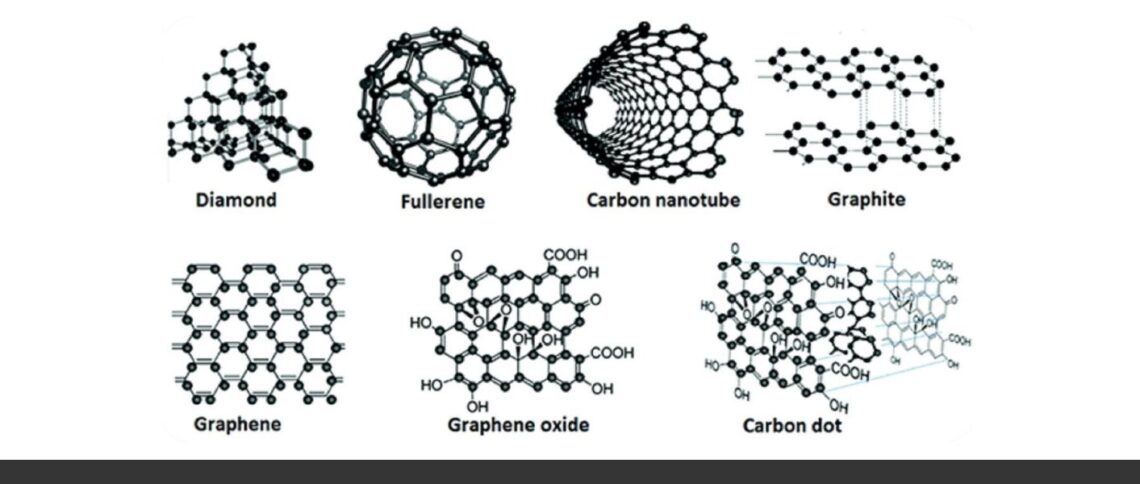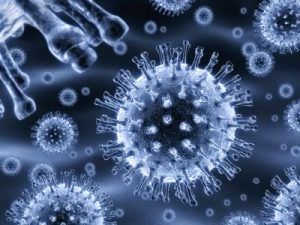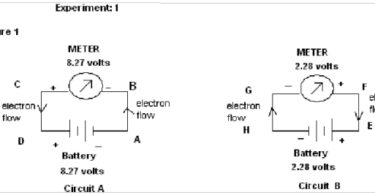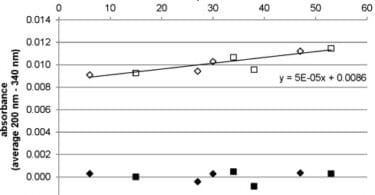All systems of medicine are prepared and administered in doses whose concentration can be quantified to be below Avogadro’s limit except for homeopathic medicine which is available both below (hormetic) as well as above (beyond the reciprocal of Avogadro’s Number, also known as avogram) Avogadro’s limit. Homeopathic medicines are prepared by a pharmacological process of Potentisation /trituration in any of the three scales of potencies: Decimal (X), Centesimal (C) and Millesimal (LM). Each dilution step divides the original quantity by 10, 100 and 50,0000 respectively.
Super-Avogadro Dilutions
1 mole of a substance contains as many grams of substance as its atomic mass and contains 6.02254 x 1023molecules. Conventional medicine is generally available at concentrations between micromolar (10-6M, the equivalent in homeopathy is 6X/3C) and nanomolar (10-9M, the equivalent in homeopathy is 9X/4.5C). In the decimal and centesimal scale of dilution, concentration of active medicinal substance in the water-ethanol solution reduces to 1/10 and 1/100 of the original concentration respectively. At 23X, the number of molecules reduces theoretically to 6.022 and 0.6022 at 24X. At 11C, the number of molecules reduces theoretically to 60.22 and 0.6022 at 12C. In terms of moles per litre, 12C contains 10-24 mol/L i.e. 0.6022 molecules/L i.e. 1 molecule/L. Even a single molecule can trigger or regulate a series of chain reactions that leads to activation of specific cell functions [1]. The probability of finding 1 molecule of the n molecules of the original substance in 24X/12C potency and above is extremely small, but not zero [2].
The Avogadro’s limit (10-23M) for homeopathic solution is 23X/11C/LM4. Potencies up to 23X/11C/LM4 contain concentrations (molecules) of the remedy source material and nanoparticles also. Measurable quantities of pharmacologically active compounds have a clear-cut, objective effect on the human body.
Emergence of Nanomedicine
In a paper [3] published in 1801, Hahnemann mentioned the prophylactic properties of Belladonna for the treatment of scarlet fever as well as the method of preparation for potentised Belladonna to 1/24,000,000 dilution. He wrote, “we dissolve a grain (1 grain = 0.06479891 grams) of this powder … in one hundred drops (1 drop=0.05 ml)of common distilled water, by rubbing it up in a small mortar; we pour the thick solution into a one-ounce bottle, and rinse the mortar and the pestle with three hundred drops of diluted alcohol (five parts of water to one of spirit), and we then add this to the solution, and render the union perfect, by diligently shaking the liquid. We label the bottle strong solution of belladonna. One drop of this is intimately mixed with three hundred drops of diluted alcohol by shaking it for a minute, and this is marked medium solution of belladonna. Of this second mixture one drop is mixed with two hundred drops of the diluted alcohol, by shaking for a minute, and marked weak solution of belladonna; and this is our prophylactic remedy for scarlet-fever, each drop of which contains the twenty-four millionth part of a grain of the dry belladonna juice.” [4]
Hahnemann recommended the administration of one drop which is equivalent to 0.0416 nanograms of Belladonna and to repeat the dose every 72 hours. This is the first recorded nanodose of medicine used in the treatment of any disease in medical history. Samuel Hahnemann is credited with the method of preparation and prescription of nanodoses of medicine.
In 1805, Hahnemann crossed Avogadro’s limit (Avogadro’s limit was however unknown at that time, it was discovered only in 1860), and the 18c potency appears for the first time. Homeopathic medicines above Avogadro’s limit are known as super-Avogadro dilutions [5] or potentised high dilutions.
Nanoparticles
Reducing particle size increases surface area. Nanoparticles are nano-size particles (1-100 nanometers diameter) having a large surface area to volume ratio which gives them different properties from those bulk forms of the same material [6]. Nanodoses of medicinal agents have several benefits over crude doses of the same substance, including enhanced bioavailability, chemical and biological reactivity, adsorptive capacity, intracellular accessibility, increased ability to cross cell membranes and even the blood brain barrier, and of course, a substantial better safety profile (because of reduced toxicity) [7]. Nanoparticles can distinguish between healthy and unhealthy cells while bulk concentrations of medicine cannot.
The body runs on micro and nanodoses. The levels of hormones and cell signaling agents in our body is in the picograms/mililitre range such as 10–900 pg/ml for estradiol, 300–10,000 pg/ml for testosterone, and 8–27 pg/ml for T4. These small amounts are known to have a profound effect on the human body
Search for Nanoparticles in Homeopathic Solutions
The presence of molecules of the original substance beyond Avogadro’s limit was first mentioned in the French book Recherché expérimentale moderne en homéopathie (Modern Experimental Research in Homeopathy) authored by Maurice Plazy and Robert Mergerin in 1967 [8].
Research carried out by a team from the Department of Chemical Engineering, Indian Institute of Technology Bombay (IIT-B) and published in Homeopathy (Elsevier) in 2010 indicates the presence of 1-4000 picograms/mililitre of fine nanoparticles (5-15 nanometer size) of the original starting material (one molar concentration) in 200c (dilution of 1 part in 10 raised to 400 parts) potency of metal-derived homeopathic medicines. This study [9] concluded that by using transmission electron microscopy, electron diffraction and atomic spectroscopy it is possible to measure the quantity of nanoparticles found in homeopathic medicines which retain their potency even when diluted to a nanometre or one-billionth of a metre.
In an article published in The Times of India, the third largest circulating newspaper in the world, dated 16 Dec 2010 titled: “IIT-B Team Shows How Homeopathy Works”, the co-author of the paper and Head of Chemical Engineering Department at IIT-B, Dr. Jayesh Bellare, said, “Homeopathy has been a conundrum for modern medicine. Its practitioners maintained that homeopathic pills got more potent on dilution, but they could never explain the mechanism scientifically enough for modern scientists” [10].
In his lecture, “Homeopathy as Nanomedicine”, at the World Homeopathic Congress 2011 [11], held in New Delhi, India from 1-4 Dec 2011, Dr. Jayesh said, “Even the highest dilutions of remedies have left signatures of respective original molecules in their nanoparticle form, when subjected to electron microscopy studies, validated later by wavelength analysis.” He related how the succussion process could ‘break the quantum domain’ of a medical substance and accelerate-decelerate protein activity, like electro-magnetic waves do.
But what about potencies greater than 200c. Do the potencies above 200c fall under the ambit of nanomedicine? As of now it has not been possible to quantify the amount of active ingredient in potencies above 200c. Logically potencies above 200c should contain even less amount of active ingredient.
Research carried out jointly by the Indian Institute of Technology Delhi (IIT-D) and the Central Council for Research in Homeopathy (Government of India) and published in the International Journal of High Dilution Research in 2011, indicates the presence of crystalline nanoparticles (100 nanometre) in 15c potencies of plant-derived homeopathic medicines. They used energy dispersive X-ray analysis, selected area nanodiffraction and trace element analysis to determine the presence of nanoparticles [12].
Research in the Indian Institute of Technology Kharagpur (IIT-Kharagpur), published in Journal of Analytical Methods in Chemistry (2012) found the presence of biologically active digoxin-like substance in Digitalis Purpurea 30c and 200c. They used Fluorescence Spectroscopy and Cyclic-Voltammetry to determine the presence of active ingredients [13].
A study [5] published in 2012 in Langmuir found that nanoparticles of six original medicinal agents persisted in 6c, 30c and 200c solutions and explained the process by which these nanoparticles are transferred and retained beyond Avogadro’s limit which has been documented with high speed videography. They also found 325 nanoclusters of lactose.
Research in the Department of Chemistry, Ramnarian Ruia College, Mumbai in 2013 using dynamic light scattering technique confirms 13.8 nanometer size particle in Terminalia Arjuna Mother Tincture [14]. This study shows that the dose of medicine required is reduced by orders of magnitude when it is in nanoparticle size which is in conformity with the principles of homeopathy.
Nanopharmacology
Homeopathy is, in fact, a form of nanopharmacology [15], medicine prepared through a specific pharmacological process of potentisation/trituration. Trituration (repeated grinding with lactose powder) is carried out by pulverisation in a grinding machine. This results in breaking down of medicinal substance into nanoparticles. Nanoparticles have biological activity. Nanoparticles in homeopathic medicines exert biological effects on the body. Nanoparticles can cause hormesis [16]. Hormesis is an adaptive response that is induced by stimulation at low doses and inhibition at high doses. Hormesis is akin to Arndt-Schultz Law which is about non-linearity between dose and response. Hence, it appears that homeopathically prepared remedies may also stimulate a similar response, causing a specific hormesis which, in turn, ensures that homeostasis is maintained, and thus, counteracts illness in a curative manner.
Conclusion
Hahnemann not only recommended nanograms of medicine for administration but also give their method of preparation. The current research has reached a state where it can be said that homeopathically prepared plant and metal remedies contains 1-4000 picograms/mililitre of nanoparticles (5-100 nanometer size) in mother tincture up to 200c potencies. Less is more as far as homeopathic medicine is concerned.
References
[1] Bellavite P, Marzotto M, Olioso D, Moratti E and Conforti A. High-dilution effects revisited. 2. Pharmacodynamic mechanisms. Homeopathy. 2014 Jan; 103(1), p. 22-43. PubMed ID: 24439453, Reference Link
[2] Nancy Malik, How do super-Avogadro Dilutions in Homeopathy Work?, https://drnancymalik.wordpress.com/article/how-homeopathy-works/
[3] Samuel Hahnemann. Cure and prevention of scarlet fever. Zeitschrift für Praktischen Medizin (Journal of Practical Medicine), 1801.
[4] The Lesser Writings of Samuel Hahnemann. Collected and Translated by: R.E. Dudgeon, 1852, p. 380-381.
[5] Chikramane PS, Kalita D, Suresh AK, Kane SG and Bellare JR. Why Extreme Dilutions Reach Non-zero Asymptotes: A Nanoparticulate Hypothesis Based on Froth Flotation. Langmuir, 2012,
[6] Roduner E. Size matters: why nanomaterials are different. Chemical Society Reviews, 2006, 35, p. 583-592, doi:10.1039/B502142C.
[7] Dana Ullman. Dysfunction at Wikipedia on Homeopathic Medicine, 10th Oct 2014, http://www.huffingtonpost.com/dana-ullman/dysfunction-at-wikipedia-_b_5924226.html
[8] Post-Debate Q&A, Debate: Homeopathy: Mere Placebo or Great Medicine?
[9] Chikramane PS, Suresh AK, Bellare JR and Kane SG. Extreme homeopathic dilutions retain starting materials: A nanoparticulate perspective. Homeopathy, 2010;99: p. 231-242
[10] IIT-B team shows how homeopathy works, The Times of India, 16 Dec 2010, http://timesofindia.indiatimes.com/city/mumbai/IIT-B-team-shows-how-homeopathy-works/articleshow/7108579.cms
[11] Nancy Malik, World Homoeopathic Congress 2011, Hahnemann Ki Aawaz, Vol. 20, Issue 9, Dec. 2011,
[12] Upadhyay RP and Nayak C. Homeopathy emerging as nanomedicine. International Journal of High Dilution Research. 2011, 10(37): p. 299-310. http://www.feg.unesp.br/~ojs/index.php/ijhdr/article/view/525/551
[13] Anup Sharma and Bulbul Purkait.Identification of Medicinally Active Ingredient in Ultradiluted Digitalis purpurea: Fluorescence Spectroscopic and Cyclic-Voltammetric Study, Journal of Analytical Methods in Chemistry, 2012, http://www.ncbi.nlm.nih.gov/pmc/articles/PMC3347722/
[14] Rajesh Brave and Ramesh Chaughule. Size dependent in vivo/in vitro results of homeopathic herbal extracts. Journal of Nanostructures in Chemistry, 2013, 3:18, http://www.jnanochem.com/content/pdf/2193-8865-3-18.pdf
[15] Paolo Bellavite and Andread Signorini. The Emerging Science of Homeopathy. Complexity, Biodynamics and Nanopharmacology. North Atlantic Books. Berkeley, California, 1995. ISBN 1-55643-384- 0. http://bit.ly/d30Tll
[16] Iavicoli I, Calabrese EJ and Nascarella MA. Exposure to nanoparticles and hormesis. Dose Response 2010, 8(4), p. 501–517, http://www.recoveryprescribing.com/wp-content/uploads/2014/05/IavicolietalNanoparticlesHormesisdrp-08-501.pdf







Generally homeopathic preparations are made in the form of tinctures by extracting the total or part of the plant material. Then the process of dilution method starts. Usually in herbal extracts many other alcoholic soluble organic compounds will enter into the tincture. They may include the poly phenolic substances like flavonoides ,anthocyanins,leucoanthocyanins,aurones,tannins, chlorophil,waxes, etc; apart from the main ingredient like Atropine,reserpine strychnine etc. For example 3.5cc.may contain roughly about one milligram. The remaining ingredients are many in total extract. In the above article It is mentioned about the nanoparticles. Which nanoparticles are identified? Are the nanoparticles have specific tests for active molecule? Many doubts were there.
in 2010 indicates the presence of 1-4000 picograms/mililitre of fine nanoparticles (5-15 nanometer size) of the original starting material (one molar concentration) in 200c (dilution of 1 part in 10 raised to 400 parts) potency of metal-derived homeopathic medicines.
It defies logic how nano-particles can be found in potencies beyond the avogadro limit. Yet it is astonishing why some homeopaths are insisting that homeopathy is nano medicine. Nano particles are not infinitismals, they have finite size but potencies are exponentially progressive dilutions and hence probability of finding even a single molecule of the original substance in dilutions higher than 15c is not just poor, but non-existence.
Hence this argument amuses the skeptics to the extent they think this saves them the trouble of even pointing out the blunder in such arguments.
This however doesn’t mean that there’s no correlation whatsoever with the original substance. Someone who is abreast with contemporary physics should know that information behaves exactly like particles upon measurement ( detection techniques are all measurements in quantum mechanics ). According to “law of conservation of information” it is not possible to delete information of any event that occurs in quantum scales. This much is highly relevant and the information of the dissolved substance would be retained by infinitismal dilutions.
If only homeopaths understand this fact and do further research on this line, there is any chance of discovering the plausible mechanism. Otherwise the argument of nano particles is going to be a dead end without further progress in the scientific explanation of the plausible mechanism.
But if we accept information ( of the original substance ) as the active ingredient in homeo remedies, all other doubts or mysteries connected with the plausible mechanism find precise scientific explanation with no scope for any loose ends.